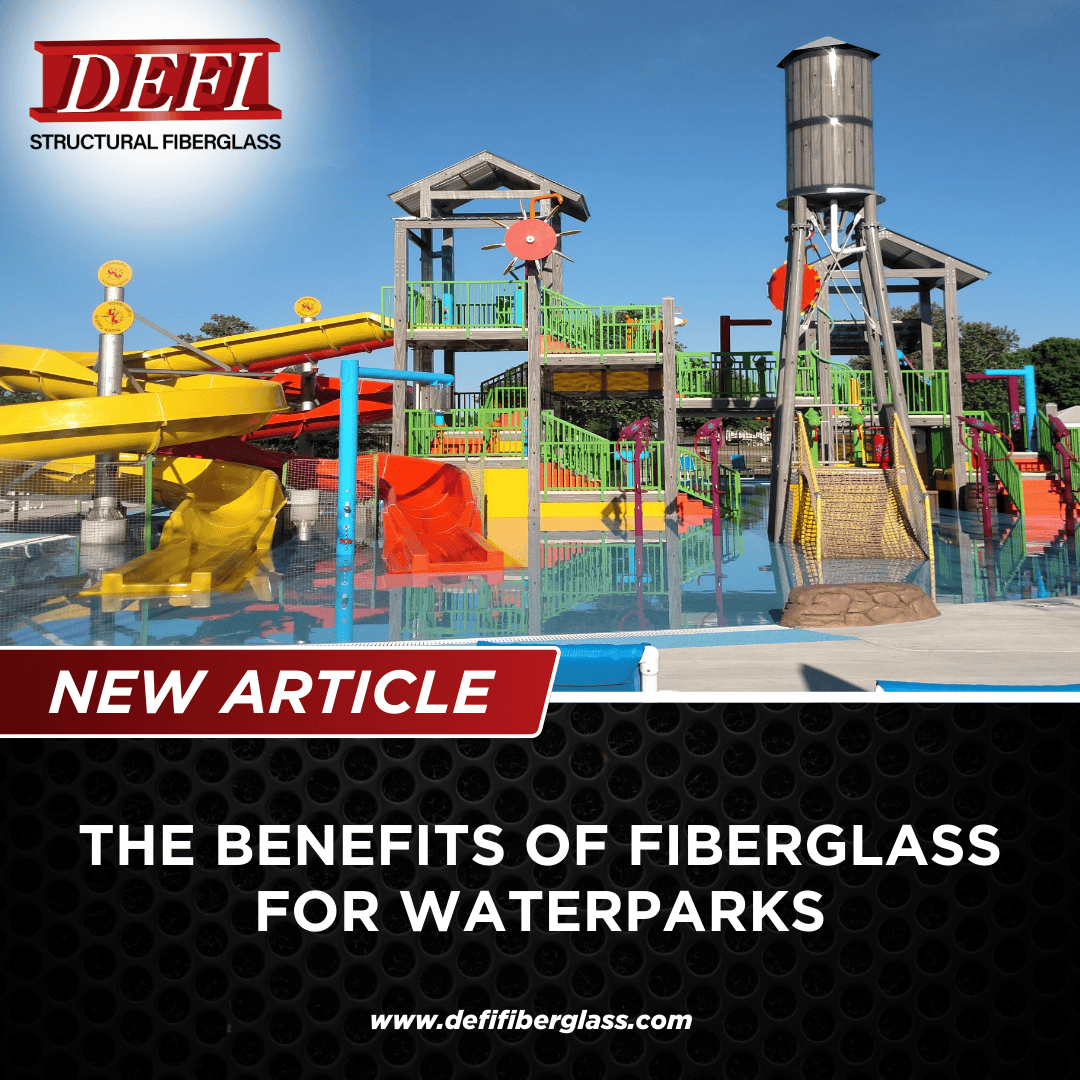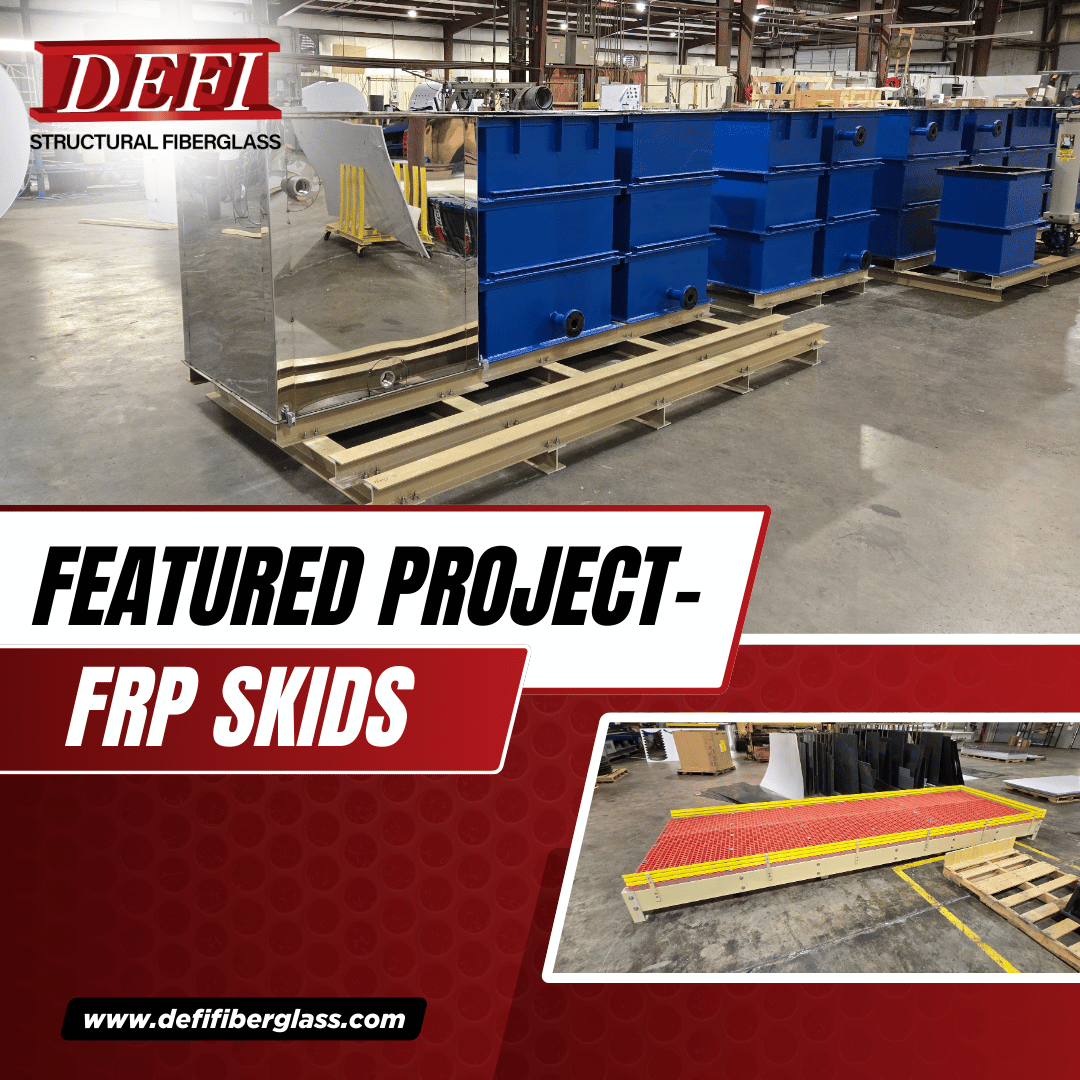FRP products can give you a competitive edge in today’s challenging economic climate . FRP is cost-effective, durable, and versatile. Structural FRP solutions include bridges, stair assemblies, platforms, handrails, and skids.
. FRP is cost-effective, durable, and versatile. Structural FRP solutions include bridges, stair assemblies, platforms, handrails, and skids.
No matter your industry, you’ll find many uses for FRP. However, FRP installation mistakes can prevent you from getting all the benefits of FRP.
Learn more about FRP and how to avoid problems in the installation process.
Types of FRP
Fiber-reinforced plastic (FRP) is a composite of resin and fiberglass. The resin provides the body or matrix that gives the product its shape. The fibers provide reinforcement. FRP can be molded or pultruded.
Molded FRP
Molding creates FRP by layering resin and fiberglass in a mold until the product reaches the desired thickness and dimensions. Molded FRP has excellent bi-directional strength.
Pultruded FRP
Pultrusion produces continuous lengths of polymer. A machine pulls the material through a linear process.
Pultruded FRP can support heavier loads and longer spans than molded FRP. However, its strength is unidirectional.
Benefits of FRP
FRP has advantages for many applications. Uses for FRP include as a replacement for wood, iron, steel, or aluminum.
FRP is strong but lightweight. It’s easy to transport, and it can have a shorter installation time than other materials. It takes less labor to install and use.
FRP resists corrosion. It requires less maintenance and repairs. It has a long lifespan.
FRP isn’t conductive, so you can use it for electrical or heat-control applications. It has a low coefficient of expansion and contraction, which gives it dimensional stability under many conditions. It enhances workplace safety.
FRP gives you design flexibility. It’s available in a wide range of sizes, shapes, and colors. You can customize the product to meet your exact needs.
Avoiding Common FRP Installation Mistakes
The FRP installation process is straightforward. However, mistakes can occur. Using the right tools and the right procedures will help ensure you get the most from your FRP grating.
Use the Right Tools
A variety of standard power tools can cut FRP products. You’ll get the best results with a masonry, carbide, or diamond-embedded blade.
A worm gear-driven circular saw is usually best for straight cuts. You can use an angle grinder, reciprocating saw, or jig saw for curved cuts.
Use the Right Cutting Practices
FRP can flex and shift during cutting. Using sawhorses or platforms for support will help you avoid problems. The panels should be firmly secured.
Turning FRP grating panels bottom-side up gives you a smoother cutting surface. This helps to reduce chipping. Using a smooth, steady pressure that isn’t too heavy helps prevent heat from building up.
You’ll use straight cuts for many situations. You should cut grating panels at an angle for changes of direction, though.
Adjacent panels should be cut at the same angle. This allows them to match when you join the panels together.
Grind and Finish the Cut Edges
If the cut edges of a grating panel are left as-is, the fibers can degrade. After cutting, the edges need to be ground smooth. A coarse resin fiber grinding disc or open-grit sandpaper are good choices for this task.
A light, even pressure helps avoid creating waves on the surfaces.
After grinding the edges, you can reseal them. A resin similar to the one used to make the FRP is a good option for sealing. You can also use a UV-stable urethane spray.
Take Appropriate Safety Precautions
Safety precautions are an important part of the FRP installation process. Cutting FRP can create dust that irritates the eyes and skin. To avoid problems, your protective equipment should include:
- Gloves
- Approved safety glasses or goggles
- P2 dust mask
- Protective clothing
A dust extraction system can remove FRP particles and other debris, which also improves the safety of your worksite.
Account for Load and Deflection
FRP has a certain amount of deflection. Failure to account for the deflection can create a soft feel in the grating or even a safety issue.
FRP installation guidelines for walkways recommend keeping deflections to 3/8″ or less. A deflection of 1/4″ will give a firmer feel. Deflection shouldn’t be more than 1/2″.
To calculate the span length, you’ll need to know the load. Keep in mind that a static load is different from dynamic or impact loads. Dynamic and impact loads increase the amount of deflection.
Sustained loads increase deflection due to creep. Higher safety controls are necessary to ensure long-term performance.
Use the Right Fasteners
You’ll need at least four fasteners per FRP grating panel.
Clips are made of stainless steel. You’ll often find clips made from grade 316 stainless steel because of its corrosion resistance. Grades 304 and 306 are other common materials.
Clips should be at least 1 1/2″ from the edges of the panels. The type of fastener to use depends on the type of connection you need to make and whether the FRP is molded or pultruded.
You can use M clips for molded or pultruded grating. M clips attach grating panels to a support using two adjacent bearing bars. They provide very secure holding.
G clips are another option with very good bi-directional holding. They attach molded or pultruded grating to a structural member flange.
For lighter-duty applications, you can use J clips for pultruded grating or L clips for molded FRP.
Finding the Right Structural FRP Manufacturer
FRP is a strong and versatile material. Following the FRP installation guidelines will help you avoid common FRP installation mistakes.
Starting with top-quality FRP products helps ensure you’ll get all the benefits of FRP. DEFI Structural Fiberglass has more than 20 years of experience creating innovative FRP grating and structural systems. We offer custom and unique fabrication, quick shipping, and exceptional customer service.
Contact us today for a free quote and see how we can meet your needs.



